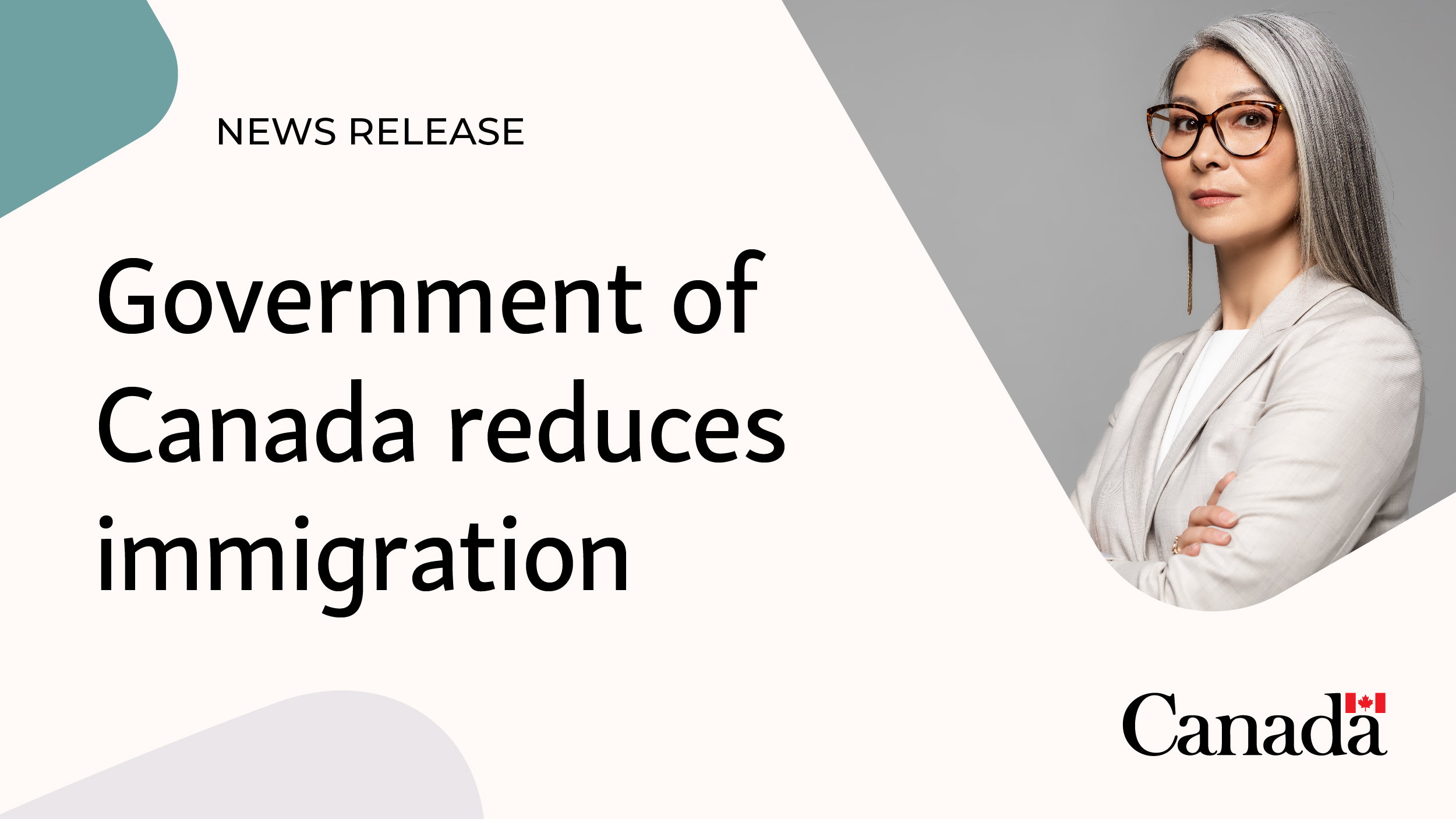Jobs
Government of Canada reduces immigration

October 24, 2024—Ottawa—Today, the Honourable Marc Miller, Minister of Immigration, Refugees and Citizenship, announced the 2025–2027 Immigration Levels Plan: a plan that will pause population growth in the short term to achieve well-managed, sustainable growth in the long term. For the first time ever, the levels plan includes controlled targets for temporary residents, specifically international students and foreign workers, as well as for permanent residents.
Immigration is essential to our country’s economic success and growth. As Canada reopened following the pandemic, the needs of businesses were greater than the supply of workers available to support their recovery. We took decisive measures to attract some of the world’s best and brightest to study and work in Canada, and to integrate them into the economy quickly. This meant a faster economic recovery. It also meant that robust immigration helped prevent a recession, while contributing to Canada’s workforce.
In response to the evolving needs of our country, this transitional levels plan alleviates pressures on housing, infrastructure and social services so that over the long term we can grow our economic and social prosperity through immigration. This unprecedented plan offers a comprehensive approach to welcoming newcomers—one that preserves the integrity of our immigration programs and sets newcomers up for success. Canadians also expect a well-managed immigration system from the Government of Canada.
The 2025–2027 Immigration Levels Plan is expected to result in a marginal population decline of 0.2% in both 2025 and 2026, before returning to a population growth of 0.8% in 2027. These forecasts account for today’s announcement of reduced targets across multiple immigration streams over the next two years, as well as expected temporary resident outflows resulting from the 5% target, natural population loss and other factors.
With this year’s levels plan, we have listened to Canadians. We are reducing our permanent resident targets. Compared to last year’s plan, we are
- reducing from 500,000 permanent residents to 395,000 in 2025
- reducing from 500,000 permanent residents to 380,000 in 2026
- setting a target of 365,000 permanent residents in 2027
The Levels Plan also supports efforts to reduce temporary resident volumes to 5% of Canada’s population by the end of 2026. Given temporary resident reduction measures announced in September and this past year, Canada’s temporary population will decrease over the next few years as significantly more temporary residents will transition to being permanent residents or leave Canada compared to new ones arriving.
Specifically, compared to each previous year, we will see Canada’s temporary population decline by
- 445,901 in 2025, and
- 445,662 in 2026, and then
- we will see a modest increase of 17,439 in 2027
These reductions are the result of a series of changes over the past year, including a cap on international students and tightened eligibility requirements for temporary foreign workers, implemented to decrease volumes and strengthen the integrity and quality of our temporary resident programs. The changes are designed with long-term economic goals in mind to make sure that we continue to attract the best and the brightest.
These changes will help provinces, territories and stakeholders align their capacities and allow the population to grow at a sustainable pace as we encourage institutions to do their part in better welcoming newcomers.
Other measures from the 2025–2027 Immigration Levels Plan include the following:
- Transitioning more temporary residents who are already in Canada as students and workers to permanent residents
Representing more than 40% of overall permanent resident admissions in 2025, these residents are skilled, educated and integrated into Canadian society. They will continue to support the workforce and economy without placing additional demands on our social services because they are already established, with housing and employment. - Focusing on long-term economic growth and key labour market sectors, such as health and trades
Permanent resident admissions in the economic class will reach 61.7% of total admissions by 2027. - Strengthening Francophone communities outside Quebec and supporting their economic prosperity
Of the overall permanent resident admission targets, Francophone immigration will represent- 8.5% in 2025
- 9.5% in 2026
- 10% in 2027
Through this plan, we are using our existing programs so that everyone—including newcomers—has access to the well-paying jobs, affordable homes and social services they need to thrive in our beautiful country.








